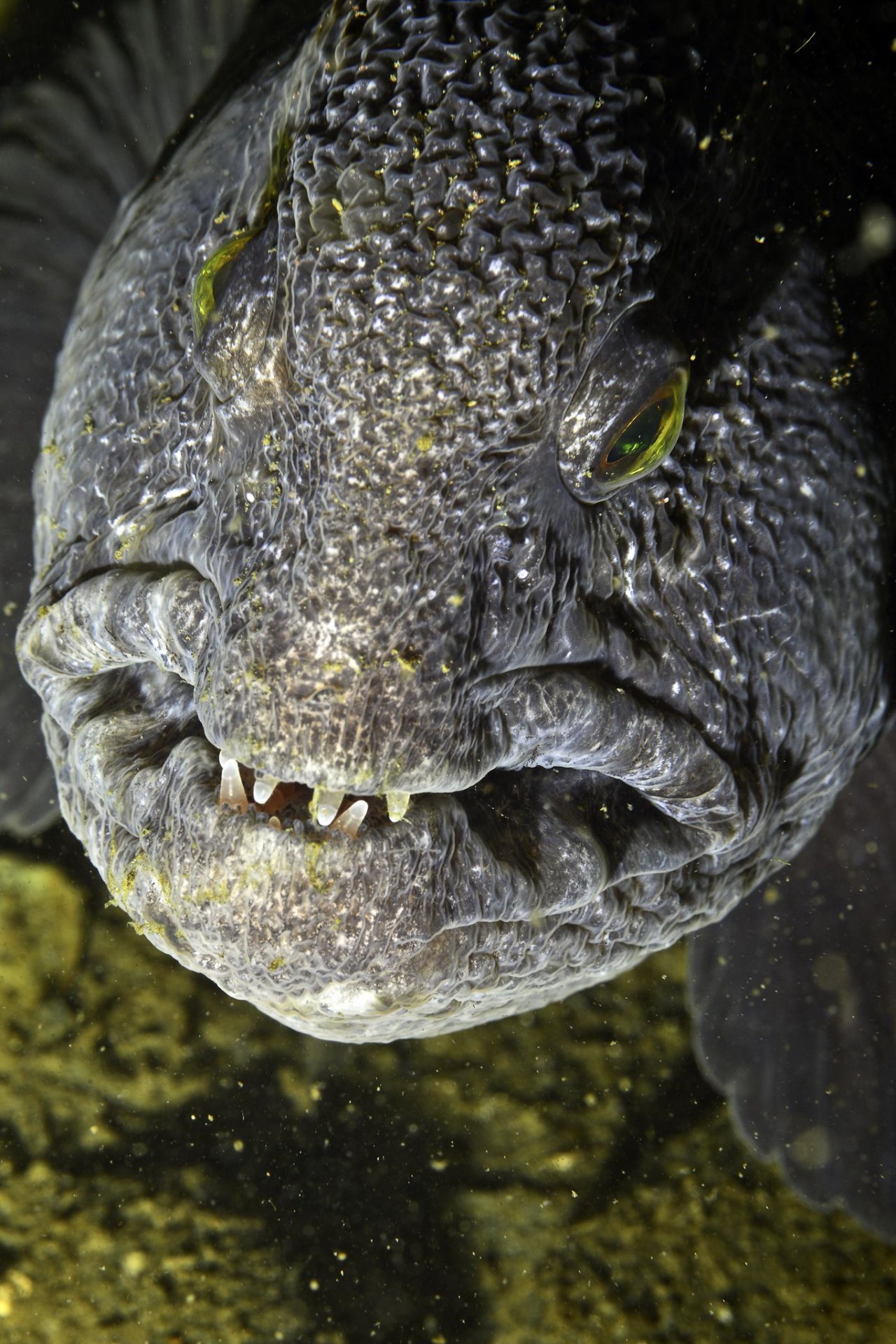

It got its name from its eel-shaped body, which can grow to 9 ft (2.75 m) long and weigh almost 50 lbs (22.7 kg). It is a member of the order Gymnotiformes and is more related to carp and catfish. iĭespite its name, the electric eel is a knifefish, not an eel. Don’t worry, though, your odds of being attacked by an eel are low, they’re mostly nocturnal and prefer to stay hidden in the sand and rocks.
Wolf eel diet in captivity series#
Baby eels, called glass eels, are transparent and are sometimes harvested for food.Įels have strong jaws and a series of small, sharp teeth (trust us, you do not want to be bitten by a big eel-check out this story of a run-in with a moray eel). Afterwards, the adults die, while the young baby eels drift on Atlantic currents back to Europe-a journey that can take two to three years. For example, the European eel travels over 3,000 mi (4,800 km) from rivers in Europe to the Sargasso Sea to mate. The longest eel ever recorded was a slender giant moray eel captured in 1927-it measured 12.9 ft (3.9 m) long, or about the height of an elephant!Īlthough most eel species primarily live in salt water, some eels travel between salt and freshwater environments to breed. There are more than 800 species of eel ranging in about 2 in (5 cm) to 13 ft (4 m) in length. iĪ true eel is an elongated finned-fish belonging to the order Anguilliformes. They may look similar, but electric eels and true eels are in completely different families. Not all animals we call “eels” are even technically eels. But today, we’re here to give these fanged-toothed, long-bodied creatures the attention they deserve by debunking a common eel myth.īelieve it or not, all eels are not created equal. It’s hard to compete with a fluffy otter or majestic whale when you are literally the villain in a Disney movie-I’m looking at you Flotsam and Jetsam. And that’s OK, we can’t blame you-they’re not exactly the more charismatic critters in the ocean.


 0 kommentar(er)
0 kommentar(er)
